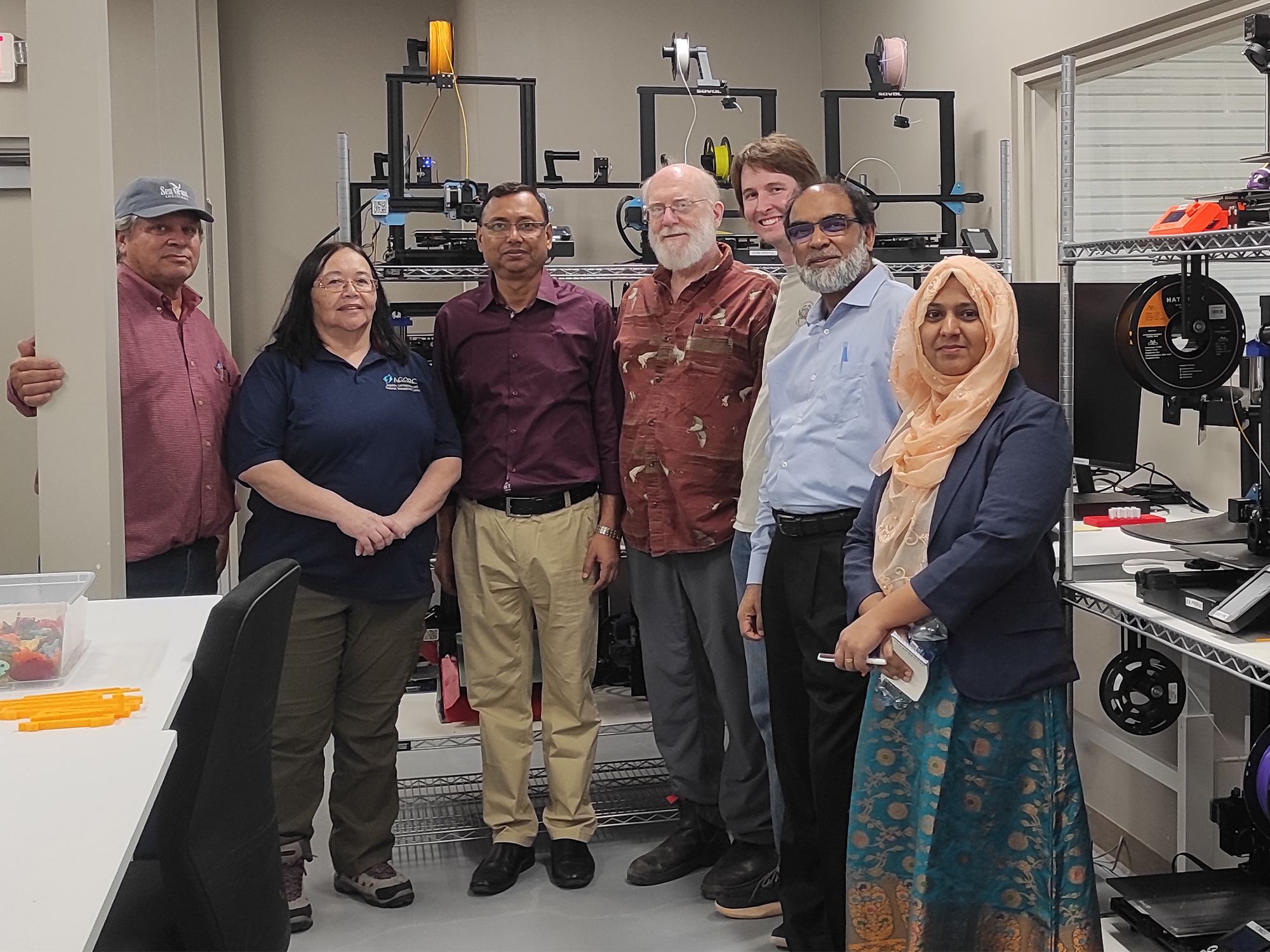
By Alaina Dismukes
The Feed the Future Innovation Lab for Fish team working with cryogenic sperm banking of Indian major carps and exotic carps completed training at the Louisiana State University (LSU) AgCenter to further their knowledge of cryogenic sperm banking with the goal of establishing a similar operational cryopreservation center in Bangladesh.
"The training program was very effective as well as interactive," said Md. Rafiqul Islam Sarder, lead principal investigator of the activity in Bangladesh. "The Aquatic Germplasm and Genetic Resources Center (AGGRC) within the LSU AgCenter facilities has expanded and is operated by a knowledgeable team that was able to share their experience and lessons learned with us.
"Many new activities such as biomedical research with frogs, sea slugs, salamanders, zebra fish, etc. are in operation, and we learned many new techniques like in vitro fertilization (i.e., test tube or culture dish fertilization) of salamanders, ultra-sound scanning of frog ovaries, vitrification of fertilized eggs or embryos of sea slugs, fluorescence microscopy, computer-assisted sperm analysis, high-throughput processing of sperm, sperm process mapping, and sperm cryopreservation mobile lab establishment and operation."
Additionally, the LSU AgCenter used 3-D printers to make low-cost accessories for cryopreservation of sperm and embryos.
"The 3-D printing mechanism was handy and would be useful in Bangladesh," Sarder said.
The research team also met with Vice President for Agriculture and Dean of the College of Agriculture Matt Lee and discussed the ongoing research activities in Bangladesh and possible future collaborations with LSU.
"The vice president was keen to learn more about our Fish Innovation Lab research activity, and he expressed his interest to continue this research in the future," Sarder said. "It was a fruitful training program, and many of the techniques can be used in our laboratory."
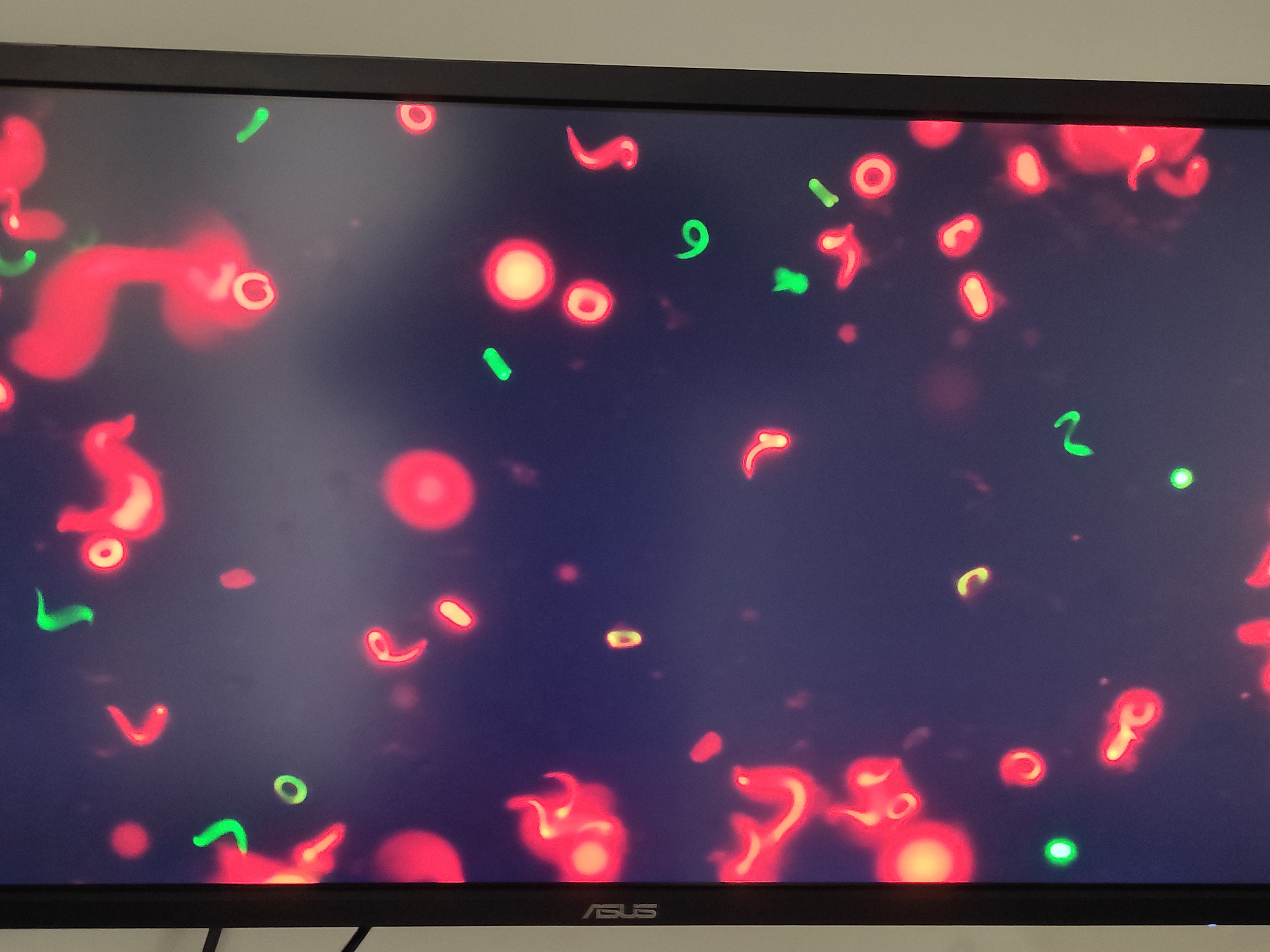
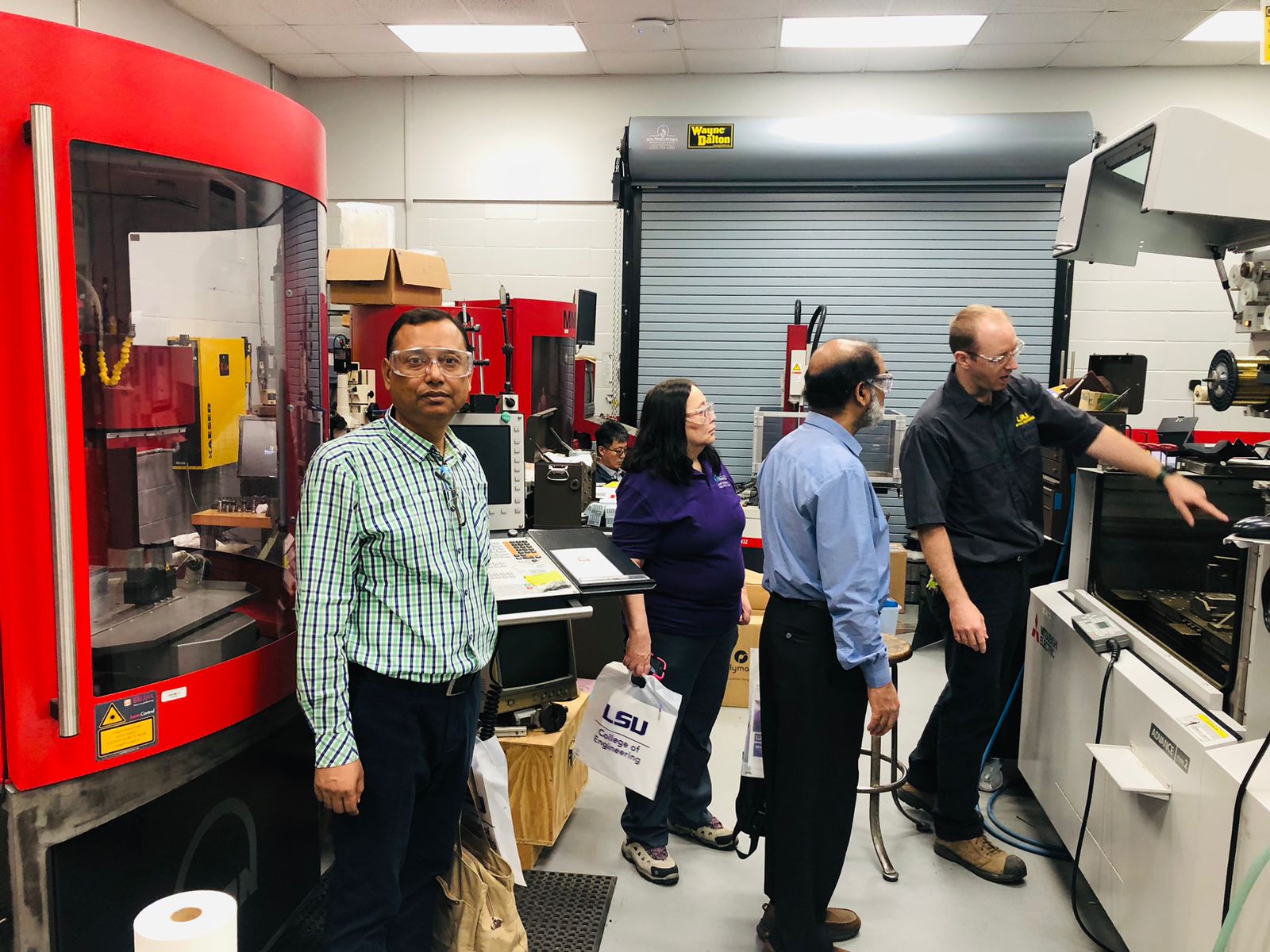
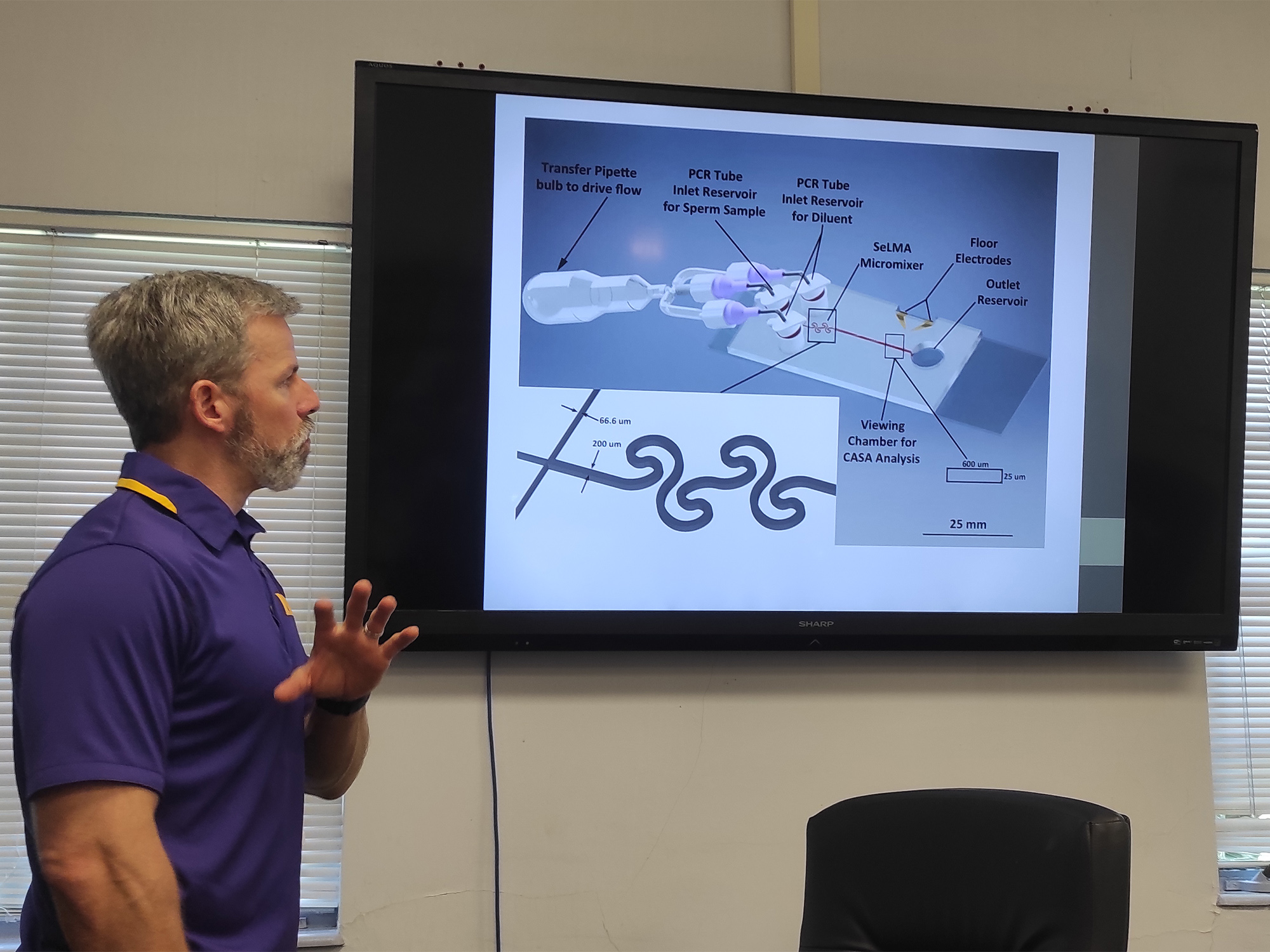
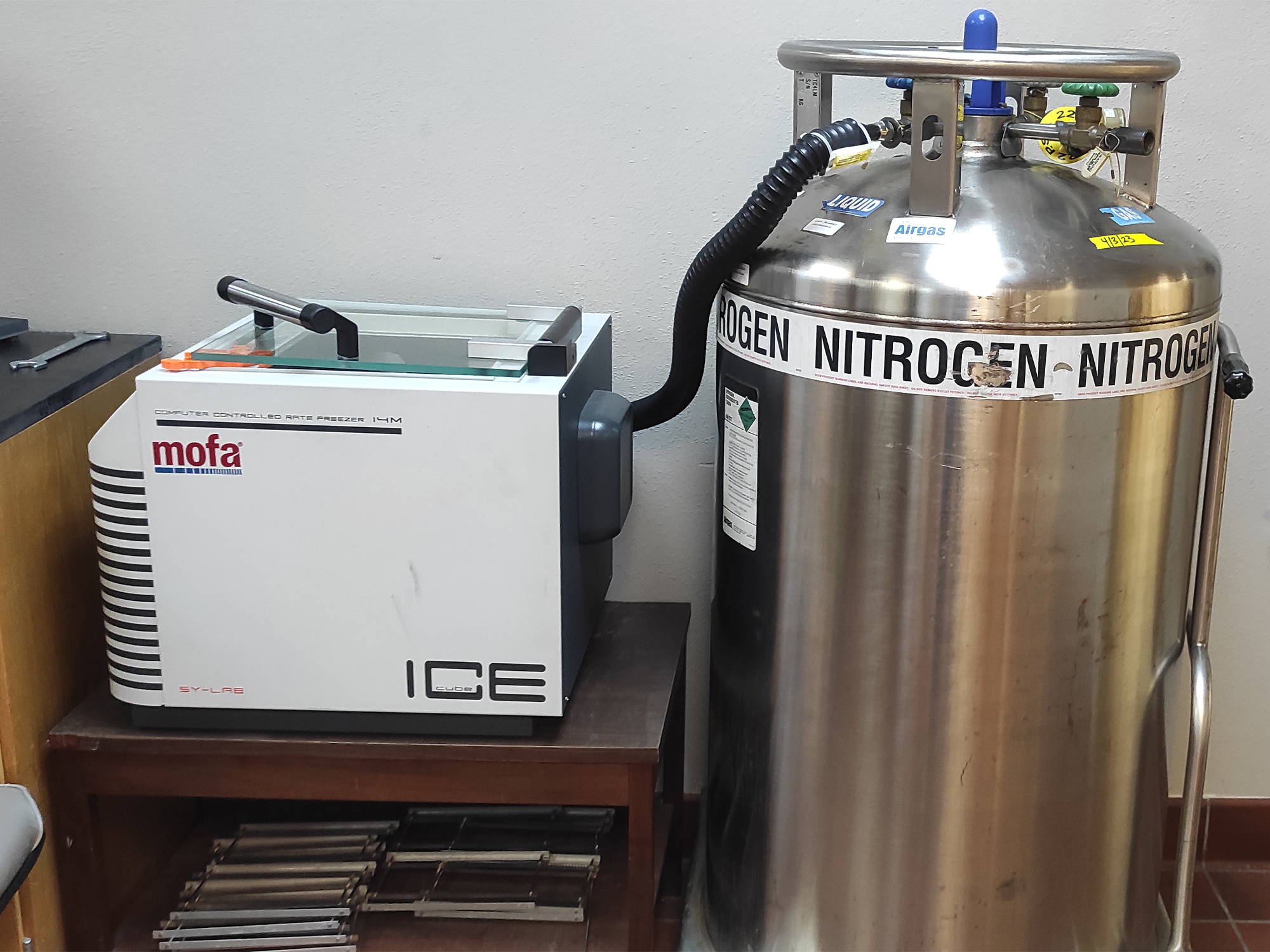
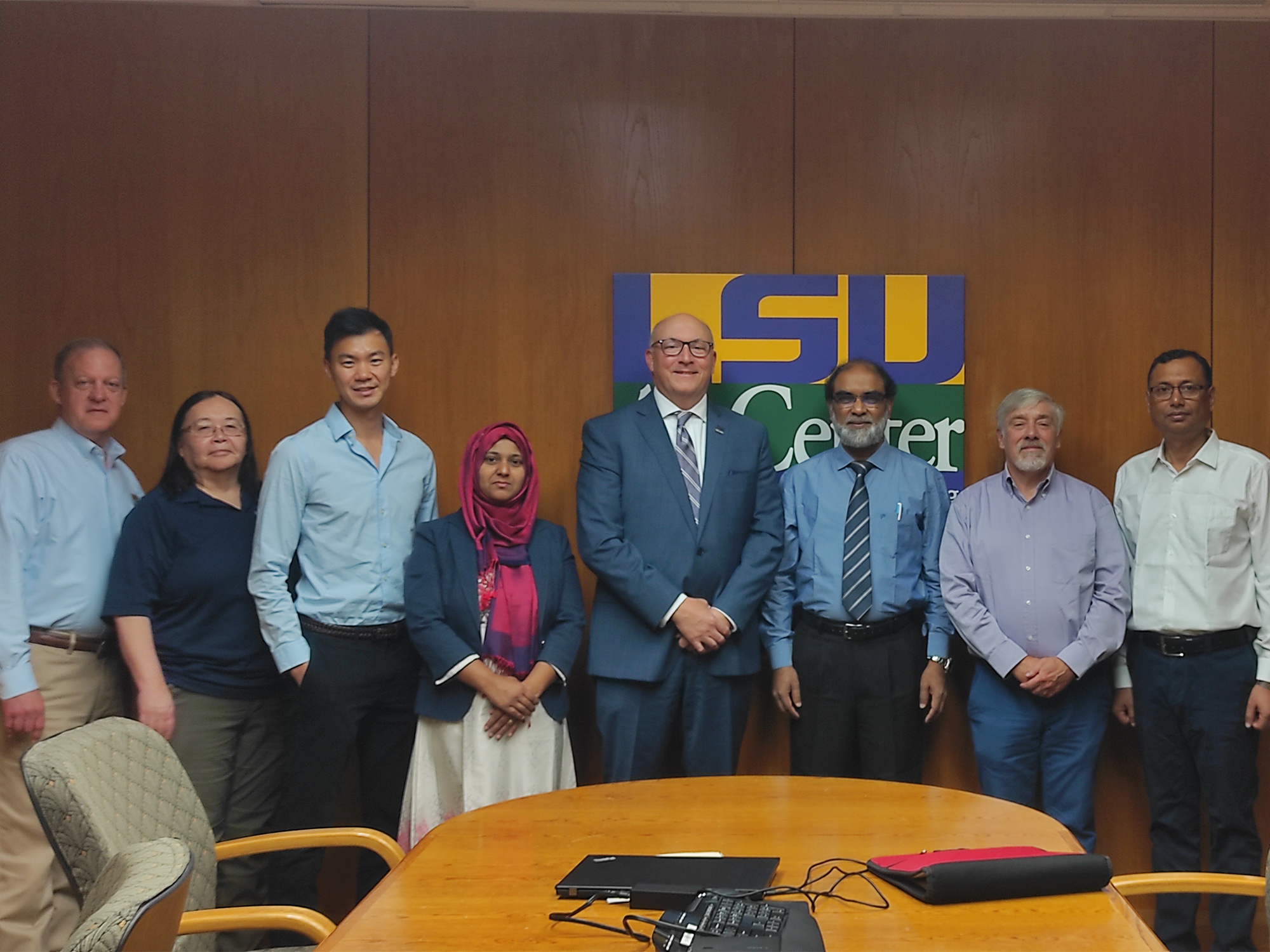
Published May 26, 2023

